
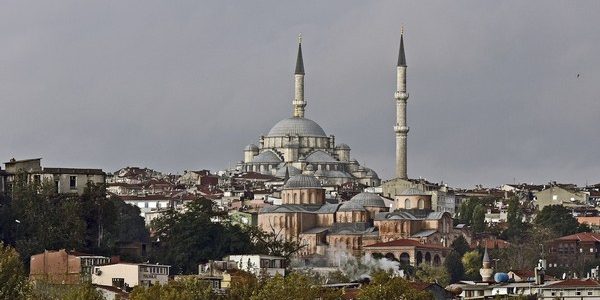
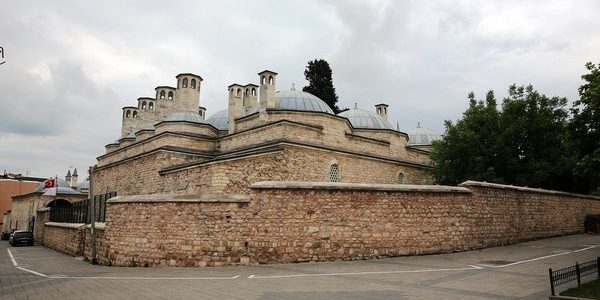

7 HILLS OF ISTANBUL
The historic city of Istanbul was built on seven hills, which have served as the city’s heart since the Byzantine emperor Constantine I first saw the region, but where are these hills now?
Many people around the world consider seven to be a mysterious number and a favored digit. Consider stories about the world’s creation, the seven sins and virtues, the seven heavens, the seven days of creation, the seven gates and layers of hell, or everyday terms like seven days a week, the seven colors of the rainbow, the seven notes on the musical scale, the Seven Wonders of the World, and so on.
Istanbul is built on seven hills and is surrounded by city walls. But when did Istanbul begin to be known as “the seven-hilled town?” The term “seven-hilled town” dates back to ancient times. When Constantine the Great came to tour the city, he was so taken with it that he decided to create a new capital here.
The Byzantine Empire and the Ottoman Empire both built impressive fortresses to secure the town’s borders. Ottoman sultans built seven mosques on these seven hills after conquering Istanbul, to echo the adhan (call to prayer) sound five times a day. The seven hills are situated on the Historical Peninsula, which is located within the city’s old city walls.
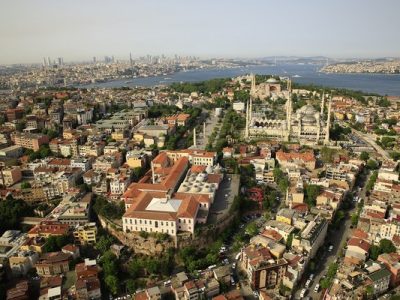
The Heart of the Empire: Sarayburnu Hill
On Sarayburnu Hill, which is now known as Sultanahmet Square, the ancient city of Byzantium was created. Since the city has maintained its international character and remains one of the busiest tourist destinations on Istanbul’s European side. Sarayburnu, which means “Palace Point,” encompasses the area where the Romans built the magnificent Hagia Sophia and the Ottomans erected Topkapi Palace, which served as the state’s administrative and educational center as well as the residence of the Ottoman sultans.
Sultan Mehmed II, the conqueror of Istanbul, built the palace between 1460 and 1478, and it served as the residence of the Ottoman sultans and their court until the mid-nineteenth century.
Sultan Mehmed II, the conqueror of Istanbul, built the palace between 1460 and 1478, and it served as the home of the Ottoman sultans and their court until the mid-nineteenth century. The Sultanahmet Complex was erected on Sultan Ahmed I’s request in the 17th century by architect Sedefkar Mehmet Aga. Sultanahmet, one of the world’s few six-minareted mosques, is known as the Blue Mosque by foreigners because of its interior’s more than 20 cobalt blue tiles.
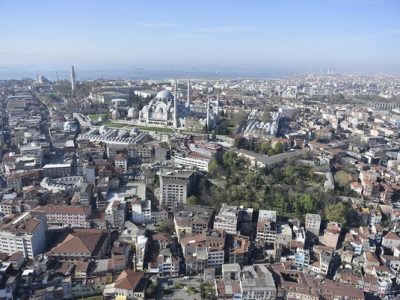
Mimar Sinan's prodigy: Beyazit Hill
Sultan Süleyman the Magnificent commissioned Mimar Sinan, the Ottoman Empire’s most famous architect, to design and build the Süleymaniye Mosque.
Construction of the complex began in 1550 and was finished in 1557. The minarets in front of the courtyard are smaller than those around the dome. As a result, Sinan the architect conjured up the concept of a series of steps reaching the sky.
During Byzantine times, Beyazt Hill, one of the tallest hills at 60 meters above sea level, was created as a public sanctuary in honor of Nymphs.
Constantine the Great established a forum, which Emperor Theodosius I later restored and renamed the Forum of Theodosius. Pantokrator Church, another notable Byzantine landmark, was turned into a mosque, which is now known as “Zeyrek.”
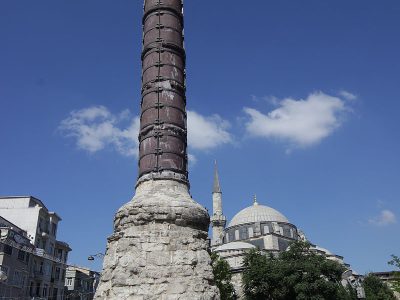
The light of Osman: Çemberlitaş Hill
This hill is estimated to be 10 meters higher than Sarayburnu Hill. The Forum Constantine, as well as the Column of Constantine (Çemberlitaş), were built on this hill during Byzantine times. Emperor Constantine constructed the emberlitaş column in the year 330.
A statue of Constantine stood at the pinnacle of the column. A fire discolored and damaged the stone, so it was encased in an iron ring in 1701 to prevent it from collapsing. As a result, emberlitaş means “ringed stone,” and legend has it that certain sacred Christian relics were hidden in a room beneath this column. The Nuruosmaniye Complex might be considered a beautiful gift from the Ottoman Empire.
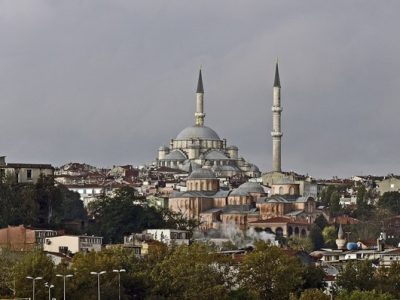
Conqueror of the town: Fatih Hill
It was the location of the Church of the Holy Apostles, which was second in size and importance to Hagia Sophia during Byzantine times. It served as the Ecumenical Patriarch of the Greek Orthodox Church until the patriarch abandoned it and the Ottomans razed it to make way for the Fatih Mosque.
Emperor Constantine, according to legend, desired to be buried in this chapel following his death. He built tombs for each of the twelve apostles and a sarcophagus for himself in the center of the tombs to identify him with Jesus. Although it is unknown whether Emperor Constantine was buried here, Fatih the Conqueror was buried in the garden following his death.
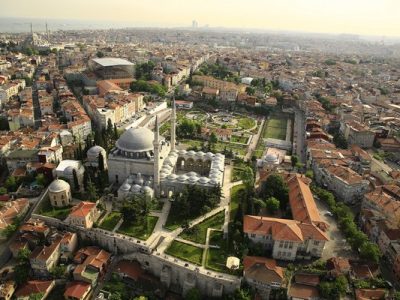
Nobility of simplicity: Yavuz Selim Hill
This hill rises from Golden Horn and finishes at the Arşamba district. It is the nearest hill to Golden Horn. The modest and elegant Yavuz Sultan Selim Mosque, which houses Yavuz Sultan Selim’s tomb and displays the architecture of pre-conquest Ottoman mosques, the Cistern of Aspar or Sultan Selim’s Sunken Garden, Fethiye Mosque or Pammakaristos Church, and the Church of St. George, the senior patriarchate of the Greek Orthodox Church, are all located on Yavuz Selim Hill.
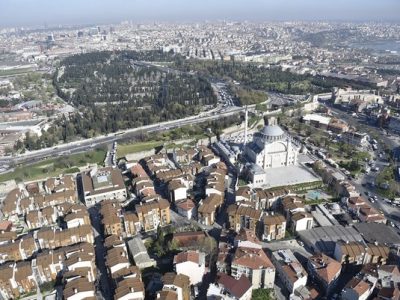
The sun and the moon: Edirnekapı Hill
This is the highest point in the Historical Peninsula, and Mihrimah Mosque, one of Sinan the architect’s most unique creations, is located here. The light is the first thing that catches your eye. The light lines surround the entire room and strengthen the mosque’s spiritual effect thanks to windows on four sides. In Istanbul, there are two Mihrimah mosques.
On the Anatolian side, one is at Üsküdar, while the other is in Edirnekap. According to legend, Sinan chose the first mosque in Üsküdar for Mihrimah, and the second mosque on the sixth hill for Mihrimah, which means “Sun” and “Moon.”
The sunsets behind Edirnekap on a specific day of the year, and the moon rises among the minarets of Üsküdar’s mosque. Who knows, maybe Mihrimah, who was known for being a very ambitious and strong woman, intended to leave her mark on Istanbul history in large letters. The Byzantines, on the other hand, built the Chora Church, which garnered notice due to its eye-catching mosaics. “Chora” means “the widest sphere that includes the spiritual universe,” and it was the name of the church that first appeared in the 11th century.
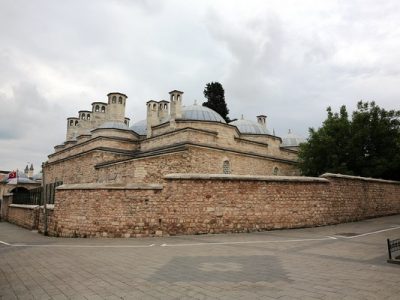
An old slave bazaar: Kocamustafapaşa Hill
Because it is the only one adjacent to the Sea of Marmara, Kocamustafapaşa Hill stands out among the other six hills. It begins in Aksaray and stretches all the way to the Theodosian Walls and the Marmara Sea.
It climbs over 60 meters above sea level between the Cerrahpaşa and Samatya neighborhoods. Until the 19th century, this location was known for its slave bazaar in both Byzantine and Ottoman eras.
The Haseki Mosque, the hill’s major feature, was built for Hürrem Sultan, Süleyman the Magnificent’s loving wife and the first woman in court to be actively involved in politics.


